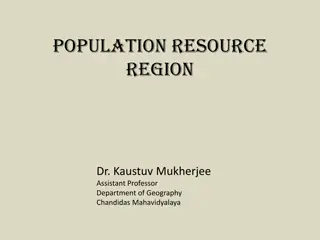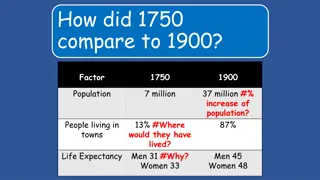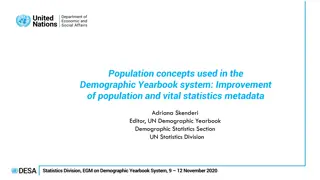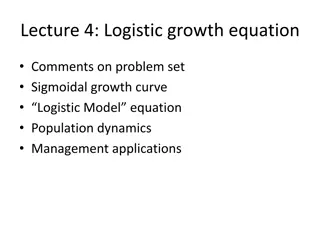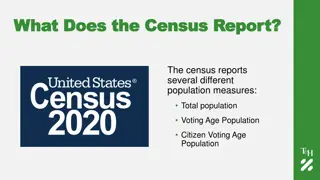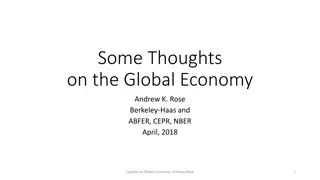Impact of Population Change on Global Economy: Data Analysis
This paper by Mason, Lee, and members of the NTA Network discusses the impact of population change on the global economy. It provides technical details on constructing measures for individual countries using population data and National Transfer Accounts data. The measures covered include effective labor, GDP, consumption patterns by age groups, support ratio, and more. The paper also delves into estimating effective labor and the components of GDP. Researchers can use this information to analyze how population dynamics affect economic indicators.
Uploaded on Sep 25, 2024 | 2 Views
Download Presentation

Please find below an Image/Link to download the presentation.
The content on the website is provided AS IS for your information and personal use only. It may not be sold, licensed, or shared on other websites without obtaining consent from the author.If you encounter any issues during the download, it is possible that the publisher has removed the file from their server.
You are allowed to download the files provided on this website for personal or commercial use, subject to the condition that they are used lawfully. All files are the property of their respective owners.
The content on the website is provided AS IS for your information and personal use only. It may not be sold, licensed, or shared on other websites without obtaining consent from the author.
E N D
Presentation Transcript
Six Ways Population Change Will Affect the Global Economy Part II: Data and Methods Andrew Mason
Overview Provide technical details about the paper Mason, Lee, and members of the NTA Network (2021 forthcoming) Six Ways Population Change Will Affect the Global Economy Presentation is intended for researchers who would like to construct measures used in this paper. The emphasis is on constructing measures for an individual country not regional or global values.
Data Requirements Population data Annual estimates and projections, both sexes combined, by single years of age (medium scenario). Available from the UN World Population Prospects website. Alternatives may be available from National statistical agencies. National Transfer Accounts data Per capita consumption and labor income by single year of age, a recent year Components of consumption (public and private education, health, and consumption other than education and health) Additional data explained as we go along.
Measures covered Effective labor, labor productivity, and GDP Consumption by broad age groups Support ratio and first dividend Old-age gap Lifecycle pension wealth
Estimating Effective Labor Effective labor is used to assess the impact of population on GDP and to project GDP Refinement of the working age population with age-specific weights based on the normalized labor income profile. Normalized labor income age profile is calculated as per capita labor income divided by the average of per capita labor income of persons 30-49. People of age 30-49 are counted as one effective worker. Those at other ages are counted as more or less than one depending on how their labor income compares with those of age 30-49. Aggregate effective labor at each age is product of population age x in year t and the normalized labor income at age x. Summing across all ages yields total effective labor in year t.
GDP and its two components GDP has two components: GDP = w x L Effective labor (L) is calculated as explained in the previous slide. Productivity is calculated using GDP and effective labor (w=GDP/L) GDP growth is equal to gr(GDP) = gr(w) + gr(L) Historical estimates of w can be used to provide a simple estimate of future productivity. Combining projected w with projected L provides an assessment of the impact of population on L or GDP. Population has other complex effects on w that are not captured by this simple method.








